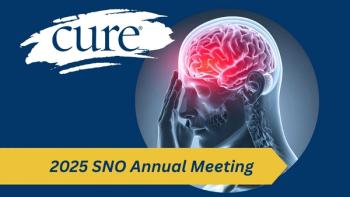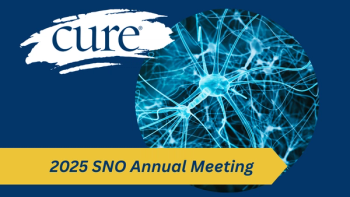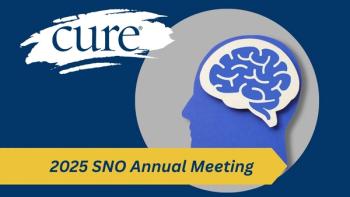
Kymriah Shows ‘Huge Potential’ for Patients With Heavily Pretreated, Relapsed Follicular Lymphoma
Kymriah may represent a more effective option than currently available treatments for patients with heavily pretreated follicular lymphoma, according to an expert from The University of Texas MD Anderson Cancer Center.
The use of Kymriah (tisagenlecleucel), an autologous anti-CD16 chimeric antigen receptor-T cell therapy (CAR-T), was associated with safe and effective outcomes in patients with heavily pretreated relapsed/refractory follicular lymphoma, including those with high-risk disease characteristics, according to recent study results.
Lead study author Dr. Nathan Fowler, a professor in the Department of Lymphoma and Myeloma at The University of Texas MD Anderson Cancer Center in Houston, explained that these results highlight a “huge advance” for treating a patient population that has limited options.
“The results highlight the potential to use cellular and immunotherapy in patients who have highly refractory disease,” he said in an interview with CURE®. “Patients with relapsed follicular lymphoma have limited treatment options. Many times, patients who relapse will experience shorter and shorter remission times and cure is quite uncommon in patients after they've had two or three lines of therapy. So, there's a huge need for … more effective options for patients who have relapsed low grade lymphomas,” he said.
Enrolled participants (97 patients) included in the study, which was published in the journal Nature Medicine, were adults who developed refractory/relapsed follicular lymphoma after two or more lines of treatment or who relapsed after autologous stem cell transplant.
At a median follow up of 9.9 months, the complete response rate (or the disappearance of cancer as a response to treatment) was 69.1% and the objective response rate (or the rate of a measurable response to the treatment) was 86.2%. Moreover, of the 31 patients who had a partial response (a decrease in tumor size or the amount of cancer in the body as a response to treatment) at three months, 15 later achieved a complete response.
“The higher response rate and high complete remission rate that we saw in the trial suggest that this class of drugs has a huge potential for these patients with (a) high unmet need,” he added.
Among patients who achieved a complete response, the estimated nine-month duration of response and 12-month progression free survival (time during and after treatment when the patient lives without disease progression) was 86.5% and 85.5%, respectively. Additionally, the 12-month progression free survival rate in the overall population was 67%.
“These results represent a potential paradigm shift in the way we treat patients with relapsed follicular lymphoma,” he concluded. “Specifically because they show that using cellular therapy could overcome resistance that we see from many different drugs and may also be associated with long term care.”
Fowler mentioned another CAR-T cell therapy with a similar efficacy outcome, which was
“This is the second trial that (has) shown very good activity for CAR-T cells in patients with relapsed follicular lymphoma. However, compared to some previous experience, this study suggests that … (Kymriah) could be associated with a more favorable toxicity profile,” he explained.
With Kymriah, side effects occurred in 99% of patients, and 78.4% experienced side effects that were severe or worse, including neutropenia (42.3%). The most common side effects included cytokine release syndrome (which involves the overstimulation of the immune system to a point where it attacks healthy organs; 48.5%), neurological events (37.1%), and immune effector cell-associated neurologic toxicity syndrome (a clinical neuropsychiatric syndrome that can occur days to weeks after certain types of immunotherapy; 4.1%). Fowler added, however, that in a vast majority of patients these side effects were mild and resolve quickly.
“The results of this trial suggest that this type of approach could be superior to existing regimens that are currently used in the third line setting for patients with follicular lymphoma,” he said.
Moreover, Fowler mentioned that several drugs that have been approved for patients who have had two or three lines or therapy are not always effective and induce response rates of about 50% to 60% and shorter remission rates of one year.
“In patients who generally live for years, if not decades, with this disease, a one-year remission rate, to me is not satisfactory,” he added. “So, these new approaches suggests that some patients … could have remissions that last for many, many years and maybe even cured. So that's (a) completely different outcome than we have seen in the past with most drugs associated with this disease. It's really exciting and it means that we may be changing the natural history of this disease.”
Fowler added that he is also excited about these results and the potential they pose. He mentioned that these types of approaches may be able to be used in earlier lines of therapy and hopefully result in greater cure numbers.
“One of the most exciting things about these results, is the suggestion that these kinds of approaches could lead to double remissions, or even cures in patients that traditionally have limited treatment options. I'm very excited to see how these types of approaches will not only be used in earlier lines of treatment, but also could potentially be used in combination to increase the cure rate (in) even greater numbers,” he concluded.
For more news on cancer updates, research and education, don’t forget to





